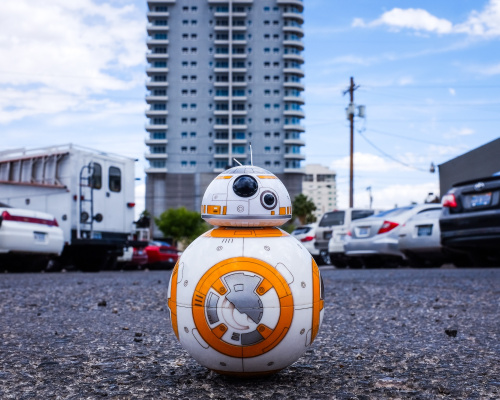Droids in the Classroom
Date
In my last blog post, I wrote about my experience with an Hour of Code tutorial centered around a round fictional robot named BB-8. BB-8 recently made its silver screen debut as the galaxy’s most-wanted droid in Star Wars - The Force Awakens.
Enthusiasts can purchase a model of BB-8 from a company called Sphero. The You Tube video introducing this product (described as an App-Enabled Droid) has already been viewed over 4 million times. While I admit to being a huge Star Wars fan, the BB-8 version of Sphero doesn’t interest me half as much as another product from the company: Sphero SPRK Edition.
SPRK, which stands for "Schools-Parents-Robots-Kids," is Sphero’s education program, now just a year old and consisting of over 4,500 teachers in more than 1,250 schools around the world. On the SPRK website, teachers can download PDF lessons that utilize the Sphero robot, covering topics like math, physics, computer programming, and robotics. With the SPRK app, students can program Sphero using blocks that represent computer code. Interested teachers and school leaders can also view an example SPRK Curriculum aligned with frameworks and standards.
What makes robots an exciting platform for teaching kids how to code is their physicality. Robots interact with their environments much more directly and tangibly than a smart phone or desktop computer. Right out of the box, robot programmers face challenges of movement and sensing as they figure out how to make their robot capable of navigating and acting on the real world.
The SPRK curriculum provides materials that enable teachers to conduct design challenges with their students. As little more than an intelligent ball, Sphero can not manipulate objects in ways often associated with robots. It can’t grab, lift, or carry anything on its own. This simplicity represents a limitation, but it can also serve as inspiration to problem-solve and innovate. These skills are central to many kinds of project-based STEAM lessons. Examples like building a Sphero-pulled chariot or Sphero-powered slack line vehicle demonstrate the usefulness of this robotics platform to teach engineering and design practices.
The Star Wars films, with their lovable “droids” like BB-8 and R2-D2, have the potential to inspire a new generation of computer scientists, engineers, and roboticists. Robot-centered curriculum like SPRK provide an elegant bridge between the fantasy of science-fiction stories like Star Wars and the creativity of science and engineering in the world we live in.

